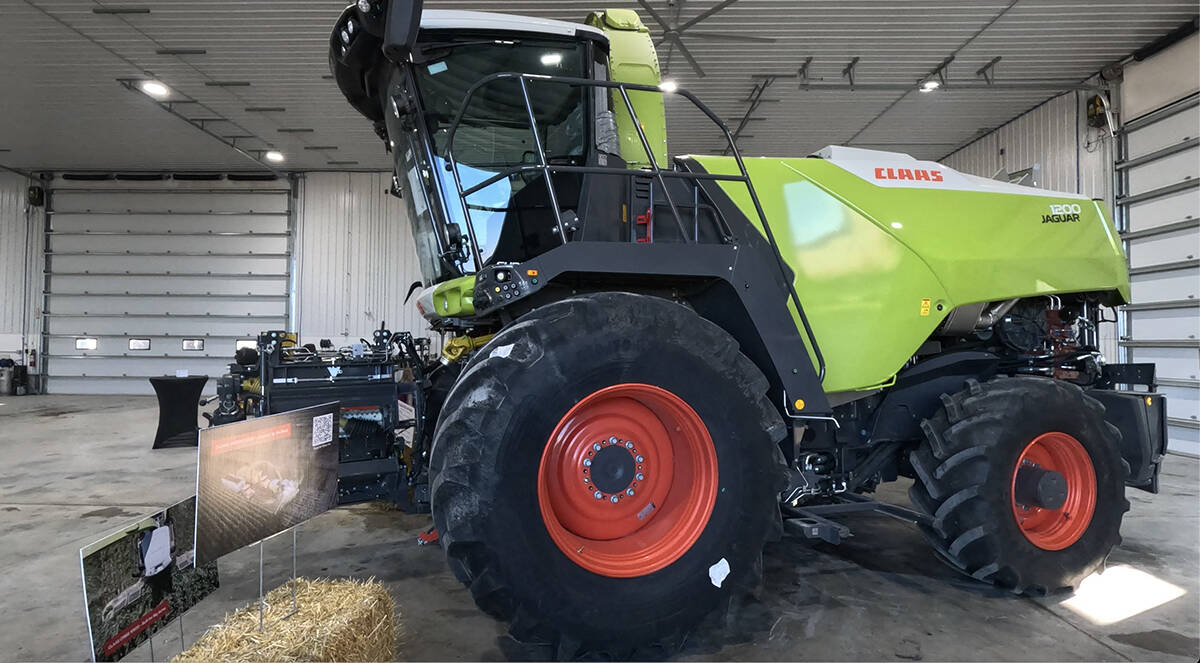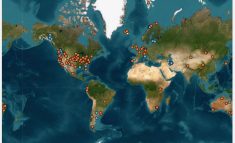Initiating a proactive micronutrient program to build soil reserves could lower input costs.
“We’ve depleted some of the easy-to-access nutrition in the soil,” said Deb Campbell, an agronomist and owner of Agronomy Advantage, speaking to attendees of Grey Ag Services’ April crop planning course earlier this month.
“I’ve seen more zinc deficiency in the last five years than I’ve seen in my entire career. Something’s changed.”
Why it matters: Micronutrient management is complex so requires planning to successfully feed deficient crops.
Read Also

Claas brings 1000 Series SP forage harvesters to Canada
In mid-August, Claas unveiled its new line of Jaguar forage harvesters at an event in Visalia, California, deep in the heart of that state’s dairy region.
Soil testing every two to three years or annually on high-value crops, including a full micronutrient panel of Zinc (Zn), Boron (B), Manganese (Mn), Copper (Cu), Iron (Fe), and Molybdenum (Mo), can inform your overall nutrient road map.
Organic matter is a crucial bonding agent, particularly for Zn, Mn, and Cu. It also helps buffer pH fluctuations, indicating when, how, and where nutrient management and plant availability measures are necessary.
Campbell said soil testing increasingly emphasizes the link between pH and plant availability issues, and pH adjustment should be a priority. Modifying pH from 5.2 to 6.2 can enhance nutrient availability; for instance, she explained that liming can free up zinc and manganese.
Traditionally, Grey County didn’t require liming. However, with yield increases and sophisticated sampling, deficient areas of this small but essential component become more evident.
Generally, only field pockets require liming, therefore, using a soil map to create a three-rate system of low, medium, and high to meet soil requirements will reduce costs, which is beneficial at $80 per acre. Campbell suggests using the highest quality lime available and applying it in advance because it takes up to two years to reach optimum impact.
Some soils have a high buffering capacity, impeding pH movement, which requires higher lime rates and applications, however, others soils only need on application.
She said an in-furrow application of 50-100 pounds of high-quality granular lime to land planted to soybeans resulted in a 14-bushel increase, providing a cost-effective option. While designer lime blends with potassium, potash, and magnesium may be pricier, they also enhance fertilizer efficiency.
“You want to have the positive gain from the lime without the negative problems that go with it,” she cautioned. “It can tie up your nitrogen, your phosphorus, a lot of different nutrients, and we want to free them up.”
She explained that addressing low fertility and selecting the most effective application method are crucial. For instance, broadcasting 100 pounds of Monoammonium Phosphate (MAP) in wheat is seven times less effective than in-furrow or strip-till application, which targets the root zone and provides maximum benefit, even at a lower rate.
“Placement matters, especially if you’re on low fertility,” Campbell said. “When you broadcast, it can get tied up with calcium or other nutrients into a form that is no longer plant-available.”
She said annual proactive management of potassium is necessary because, “frankly, we are not keeping up with potash.” She suggested applying two years’ worth of fertilizer to loam and clay loam soils and leaving residue to help reduce nutrient loss and minimize erosion.
Soil tests provide insight to diagnose micronutrient loss, and field scouting for symptoms pinpoints limited patches because deficiencies are generally never “corner-to-corner.” Google Maps satellite imagery can help build a soil sample schematic if soil mapping isn’t in the budget, especially when paired with a fertilizer removal app like Ag Phd to track potential nutrient deficiencies by crop.
Testing crop tissues at an appropriate stage, such as corn at the four to six-leaf or mid-vegetative stage for forages, can determine whether low soil values and extenuating circumstances restrict plant uptake, informing management decisions.
“Your soil test might say you have enough; meanwhile, you’re seeing deficiencies,” she said. “The more polarized the zones of soil type, the sands and muck, are the starting point for addressing micronutrients and looking for those visual key symptoms.”
Sandy soils generally require smaller, frequent in-furrow or foliar micronutrient applications because low organic matter hinders holding capacity, while clay binds some nutrients, impeding plant availability.
For example, muck’s high organic matter can hold adequate or surplus amounts of Mn or Fe, but tissue tests could still show plant deficiency.
“(Muck) can test really, really high in manganese, for example, but it won’t release it,” she said. “(You) have to go in and apply it.”
Certain topography, soil or crop types will almost certainly provide conditions for micronutrient deficiency. For example, a zinc deficiency in corn shows interveinal striping on young leaves, typically occurring on knolls and in high phosphorous zones, resulting in high grain moisture retention.
Boron can lead to stunted alfalfa growing points and a “witch’s broom” appearance, especially in sandy and low organic matter fields. Manganese deficiency in soybeans and cereals shows interveinal chlorosis on new leaves, particularly in wet depressions and high-pH soils.
B and Mn are tied to soil type and organic matter levels, so she advises treating them as needed, but zinc levels can be built, making it an ideal micronutrient investment.
Despite numerous attempts, it’s been difficult to build sulphur levels in Ontario, explained Campbell, but have sufficient levels of Cu, unlike Northern Ontario soils, which have zero.
“We’re a month ahead of fertilizer season, so most crop plans are set,” said Campbell. But “is there a gap anywhere in your crop plan that maybe something needs to be addressed.”















